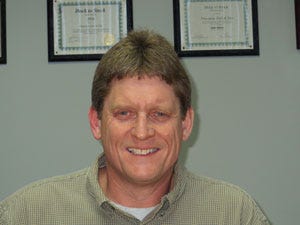Outsourcing Outlook on Cleanroom Manufacturing and Assembly Services: Interview
December 27, 2013
A common job interview question goes something like this: What is the most difficult challenge you encountered and how did you address it? We put a similar version of that question to Michael P. Driscoll, operation manager at Precision Tool & Die (Derry, NH), and received a blow-by-blow example of the need for a solid engineering plan to produce an unusual cleanroom-molded medical device part. In addition, Driscoll also shares insights into how to evaluate a contract manufacturer's cleanroom operations and the benefits of Autodesk Moldflow Insight & Adviser software.
MPMN: The cleanrooms used by manufacturers of electronics, optical products, and so forth can be considerably different than those used for medical device applications. How can a medical device firm be certain that a contract manufacturer's cleanroom facilities meet the standard required by the medical device industry?
|
Michael P. Driscoll |
Driscoll: Medical device OEMs should audit the manufacturers' cleanroom procedures and processes, paying close attention to schedules and records showing daily, weekly, and monthly cleaning, particle counts, viable and non-viable particulates (non-viable includes yeast, mold bacteria, and others) as well as the general cleanroom design. They should also include looking for controlled environments for gowning and material pass through rooms.
Medical device molding has life and death consequences. OEMs should pay close attention to the small details of the selected manufacturer's methods and controls. It is important to use a manufacturer who is experienced with the type of devices or implants to be produced.
MPMN: Could you briefly describe the benefits of Autodesk Moldflow Insight & Adviser software and how it relates to cleanroom manufacturing and assembly?
Driscoll: The use of mold filling analysis software starts in the engineering department. New medical devices and implants often evolve from machined prototypes without regard for the eventual process of injection molding. By the time these devices are ready for molding and we get involved, the devices will often need geometry adjustments just to make them moldable with any level of stability.
This software helps analyze and optimize device geometry, as well as runners and gating options, in a way that eliminates the time and cost disruption of a mold needing to go in and out of a cleanroom process to make tool adjustments.
MPMN: What was the most difficult cleanroom-manufacturing related request you ever had from a medical device OEM and how did you address it?
Driscoll: We have had a lot of tough projects, but one of the more recent ones was a thin wall insulator skirt for an implanted left ventricular assist device (LVAD).
An LVAD is a mechanical pump that is used to support heart function and blood flow in people who have weakened hearts. They can be used to take stress off the heart while heart muscles heal, or while waiting for a heart transplant, or even as a long-term solution in the event someone is not eligible for a transplant.
This particular part is cup shaped and approximately 1.750 in. diameter by 0.750 in. deep with a series of internal shoulders and skirts. Wall thicknesses vary between 0.004 and 0.008 in. in different areas (similar to a sheet of copy paper). tolerances are down to +/- 0.001 in. in several areas.
We knew we were being asked to mold a very difficult part, so we approached it in stages. The first focused on engineering. We corrected and cleaned up the customer supplied solid model and used mold filling analysis to see if we could develop a gate layout that would completely fill the part with sound knit lines. Six sub-gates were required. Once this was done, a balanced runner system was developed to feed those gates. At this point, we presented the results to the customer and got approval to make holding fixtures and machine 15 prototype parts from solid rod stock for testing. The parts performed well and met all functional requirements.
Stage two was to design and build a prototype mold setup in a way to allow working out the thin wall molding and tight tolerance concerns, as well as having it evolve into a production mold. The mold was built, and using data from the mold filling analysis, the Cleanroom molding process was developed.
Cleanroom molding for a human implant cannot use mold release sprays or material release agents. We had trouble with one of the thin walled skirts pulling and distorting as the mold opened, and another area of the part distorting as the ejectors came forward to eject the part. Adjustments in mold temperature, injection pressure, speed, and melt temperature did minimize, but could not completely eliminate these two areas of distortion. However, even though these molded parts had slight distortion, they were useable for preliminary testing in assembled devices and worked well.
The third stage of the project was to add features to the mold for elimination of the distortion and bring the mold to production quality.
Articulation was added to the A-side skirt cores. This allowed them to retract from the molded part before the parting line opened. The part is fully supported while the parting line remains closed and this change worked to eliminate the distortion. Air assist was added to the B-side coring. The air assist breaks the initial vacuum of the molded part to the core as the stripper plate advances, and was successful in eliminating molded part distortion during ejection. The mold has since gone through a complete validation, high and low process conditions are documented, and the mold runs fully automatic in the cleanroom environment.
Difficult projects like this one are served greatly by approaching them with a sound engineering plan, as well as having the necessary tools, talent, and creativity to work through any problems that occur along the way.
Related:
About the Author(s)
You May Also Like


.png?width=300&auto=webp&quality=80&disable=upscale)
